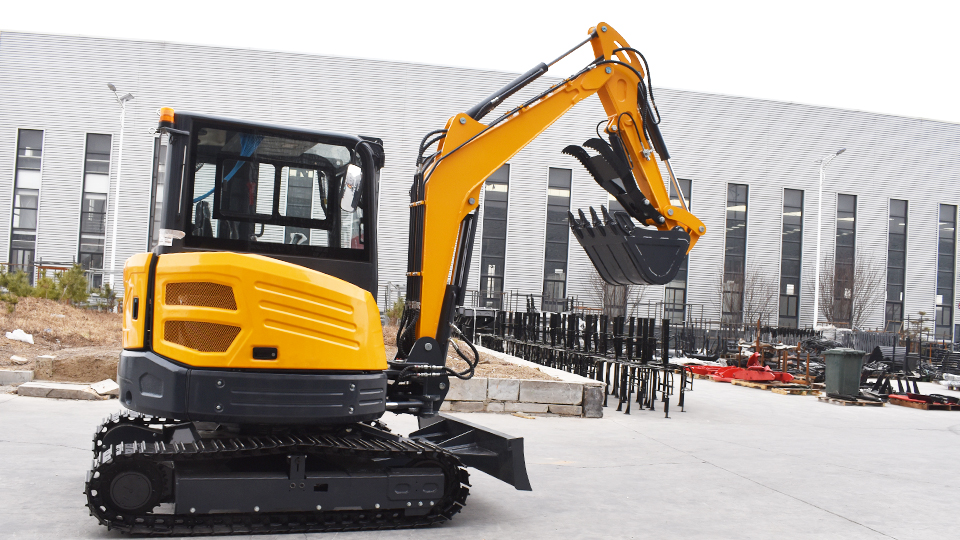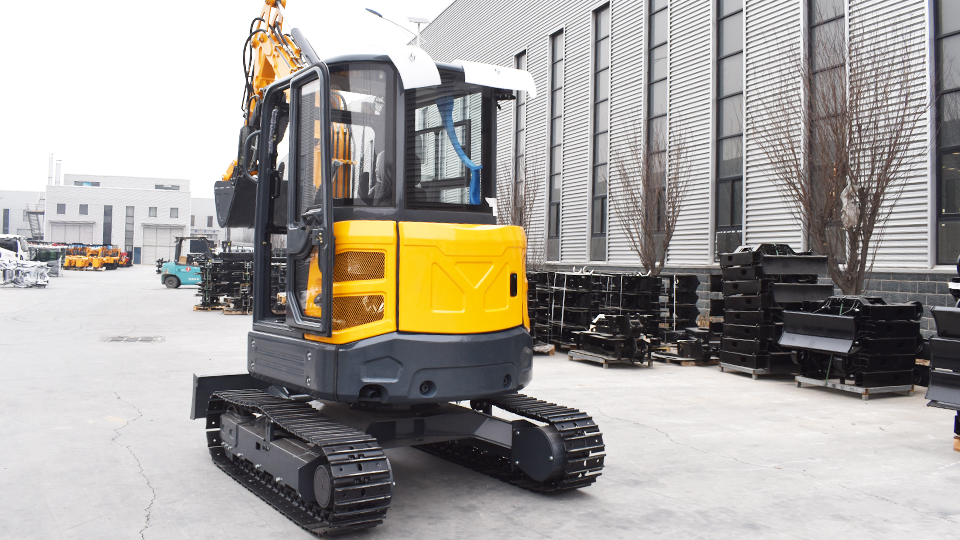The excavator is an indispensable workhorse on any construction site, capable of immense power for digging, lifting, and demolition. However, this power, if not managed with utmost care and vigilance, also carries significant risks. Accidents involving excavators can be catastrophic, leading to severe injuries, fatalities, extensive property damage, and costly project delays. Therefore, adopting a "Safety First" mindset and rigorously adhering to established safety protocols are not just regulatory requirements but fundamental principles for any operator or site manager. This article outlines essential tips for safe excavator operation, emphasizing pre-operation checks, situational awareness, proper operating techniques, and continuous vigilance.
1. Comprehensive Pre-Operation Checks: The Daily Ritual
Safety begins before the engine even starts. A thorough walk-around inspection is critical to identify potential hazards or maintenance issues.
Operator's Manual: Always review the operator's manual for specific safety procedures and guidelines for the particular excavator model.
Fluid Levels: Check engine oil, hydraulic fluid, coolant, and fuel levels. Low levels can lead to machine malfunction and potential safety hazards.
Leaks: Inspect for any leaks of hydraulic fluid, fuel, or coolant. Leaks can indicate component failure, create slippery surfaces, or pose environmental risks.
Tracks/Tires: Examine tracks for damage, proper tension, and debris. For wheeled excavators, check tire pressure and condition.
Attachments: Verify that the bucket or other attachments are securely fastened, free from damage, and appropriate for the task.
Hydraulic Hoses and Cylinders: Look for wear, fraying, bulges, or damage to hoses and cylinders. Ensure no hydraulic fluid is leaking.
Pins and Bushings: Check all pins and bushings on the boom, stick, and bucket for wear or looseness.
Lights, Alarms, and Horn: Test all lights (headlights, work lights, warning lights), the backup alarm, and the horn to ensure they are functional.
Safety Devices: Verify that all safety features are operational, including seatbelts, ROPS/FOPS (Roll-Over Protective Structure/Falling Object Protective Structure), emergency stops, and door interlocks.
Cleanliness: Ensure the cab, steps, and handholds are free of dirt, grease, or debris that could cause slips. Clear visibility through windows.
2. Site Assessment and Hazard Identification
Before moving or operating the excavator, a thorough assessment of the work area is paramount.
Utility Locates (Call 811): Always confirm the location of all underground utilities (electrical cables, gas lines, water pipes, sewer lines, fiber optics) before digging. Striking a utility line can be fatal, cause explosions, or lead to massive service disruptions.
Overhead Hazards: Identify and maintain safe distances from overhead power lines, bridges, trees, and other structures. Use a spotter if necessary.
Ground Conditions: Assess the stability of the ground. Be aware of soft spots, slopes, trenches, or unstable edges that could cause rollovers or cave-ins.
Slope Stability: Never operate an excavator on a slope steeper than what is recommended by the manufacturer. Digging on slopes can destabilize the machine.
Pedestrian and Vehicle Traffic: Establish clear exclusion zones around the excavator's swing radius. Use signage, barriers, and flaggers to control traffic and pedestrian movement.
Weather Conditions: Be mindful of weather. Wind can affect stability, rain can make surfaces slippery, and lightning can pose an electrocution risk.
Clearance: Ensure adequate clearance for the excavator's boom, stick, and counterweight swing.

3. Operator Proficiency and Preparedness
A well-trained and prepared operator is the most crucial safety component.
Certification and Training: Operators must be properly trained and certified for the specific type of excavator they are operating. Regular refresher training is recommended.
Physical and Mental Fitness: Operators must be well-rested, alert, and free from the influence of drugs, alcohol, or medications that impair judgment or reaction time.
Personal Protective Equipment (PPE): Always wear appropriate PPE, including a hard hat, high-visibility clothing, safety glasses, safety-toed boots, and hearing protection if necessary.
Seatbelt Use: Always wear the seatbelt when operating an excavator. This is critical for preventing ejection in case of a rollover.
4. Safe Operating Techniques
Once the machine is running and the site is assessed, proper operating techniques are essential.
Maintain 3-Point Contact: When entering or exiting the cab, always maintain three points of contact (two hands and one foot, or one hand and two feet) to prevent slips and falls.
Know Your Machine's Limits: Understand the excavator's load charts, lifting capacities, and stability limits. Never exceed these.
Load Management:
Keep loads low to the ground during travel to maintain stability.
Avoid swinging heavy loads uphill on a slope, as this can easily tip the machine.
Do not overload the bucket or attachment.
Smooth and Controlled Movements: Avoid sudden, jerky movements, especially when lifting or swinging loads. Smooth operation reduces wear and tear and enhances stability.
Visibility: Always ensure clear visibility. If vision is obstructed, use mirrors, cameras, or a competent spotter who maintains visual contact with the operator.
Communication: Use clear hand signals or two-way radios for communication with ground personnel and other equipment operators.
Digging Techniques:
Dig away from the excavator's tracks when trenching to maintain stability.
Never undermine the ground directly beneath the machine.
Be aware of spoil pile locations and ensure they don't block visibility or become unstable.
Parking and Shut Down:
Park on firm, level ground.
Lower the bucket or attachment to the ground.
Shut down the engine, engage the parking brake, and remove the key.
Secure the machine against unauthorized use.
5. Environmental Awareness and Continuous Vigilance
Safety is not a checklist; it's a continuous state of awareness.
Watch for Changing Conditions: Ground conditions, weather, and site layout can change rapidly. Continuously reassess the environment.
Be Aware of Personnel: Always assume people might enter the work zone. Maintain vigilance for anyone approaching the excavator.

Communication with Spotters: If using a spotter, ensure clear and consistent communication. Stop operations immediately if visual contact is lost or communication breaks down.
Fatigue Management: Operators should take regular breaks to combat fatigue. If an operator feels tired or unwell, they should not operate the machinery.
Reporting Hazards: Any observed hazard, malfunction, or near-miss should be reported immediately to a supervisor.
Conclusion
The excavator is an indispensable tool, but its safe operation is paramount. By diligently performing pre-operation checks, thoroughly assessing the work environment, ensuring operator proficiency, adhering to safe operating techniques, and maintaining constant vigilance, the risks associated with excavator use can be significantly mitigated. A "Safety First" culture, reinforced by continuous training and adherence to best practices, protects workers, prevents costly damages, and ensures that projects can proceed efficiently and without incident. On every construction site, the commitment to safety should be as powerful and unwavering as the machines themselves.
Post time:Sep-25-2020
